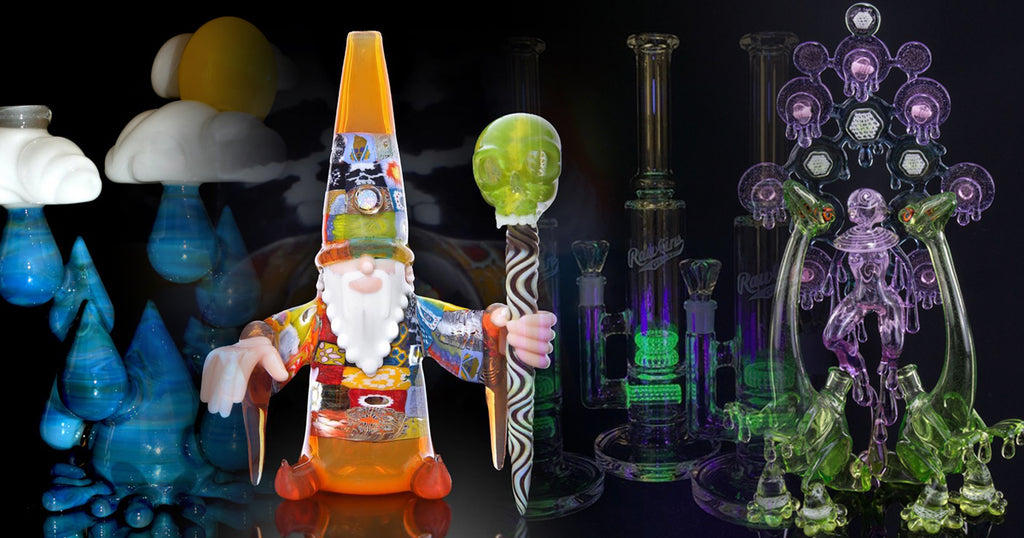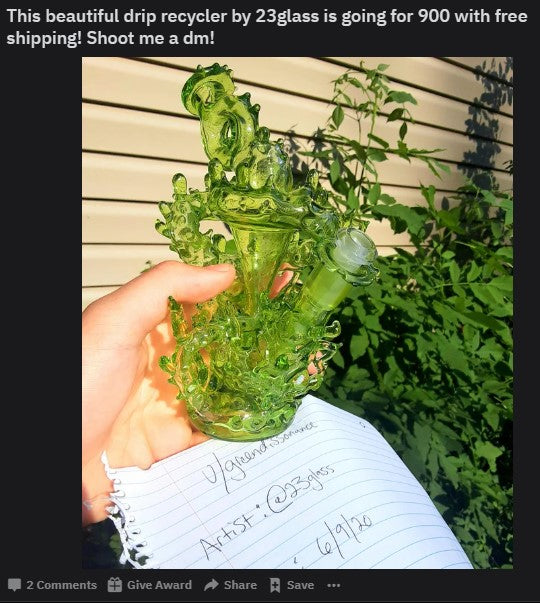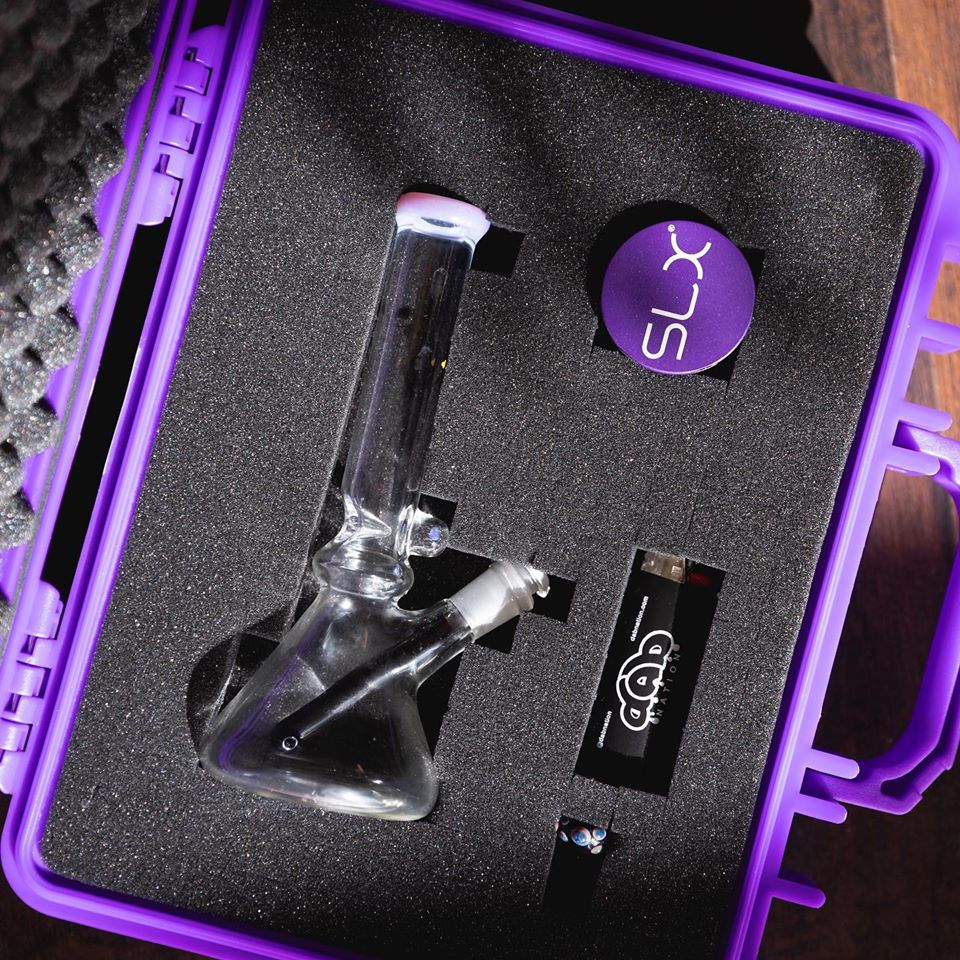The History of the Heady Glass Market Bubble
Posted by SLX Grinders on
In our last article, we took a look at the Top Ten Glassblowers Still Standing in 2020. Of course, art is subjective, so we didn’t even number the list and, of course, your Top 10 may look a little different. The truth is, there are dozens of top tier glass artists still standing and still making a living by blowing our minds, but times have certainly changed in the glass game.

If you were tuned in to the heady glass market between 2010 and 2015, you witnessed a wild ride the likes of which had never been seen before and we don’t ever think we’ll see again. Yes, there are still plenty of pipes, bongs, and dab rigs with three, four, and five-figure price tags on them but the buyers have mostly dried up, leaving only the hardcore.
What will that mean for the future of high-end headshops and glass galleries, and for the artists themselves? First, let’s look back at the history that got us here.
THE LAUNDROMAT
As we’ve written before, heady glass goes back decades with wrap and rake pipes and fumed bongs bursting onto the weed scene in the 80s and 90s. But it was the passage of Prop 215 in 1996 and SB420 in 2004 in California that established the world’s first major medical marijuana market and kicked the glass game into overdrive.
By 2010, the MMJ market in Cali was on fire. The state had thousands of quasi-legal storefront dispensaries being fed by tens of thousands of growers, extractors, and middlemen, making for a mostly untaxed and self-regulated multibillion-dollar marketplace… and, for the most part, it worked.
 It is an interesting problem to have, but it is a problem. For many wax and weed dealers, the solution was to invest it in a stock market of the streets, so to speak. They bought high-end, heady glass which proved to hold its value over time, if not increase in value.Of course, those that took the risk and served the supply side of that market were dealing in an all-cash environment but without some elaborate manipulation, they had no place to put all that cash since banks were federally banned from touching it.
It is an interesting problem to have, but it is a problem. For many wax and weed dealers, the solution was to invest it in a stock market of the streets, so to speak. They bought high-end, heady glass which proved to hold its value over time, if not increase in value.Of course, those that took the risk and served the supply side of that market were dealing in an all-cash environment but without some elaborate manipulation, they had no place to put all that cash since banks were federally banned from touching it.
This new demographic catapulted the careers of countless glassblowers who happily took that cash.
It was really a natural symbiosis that came crashing down in Cali after the state passed Prop 64 in 2016, killing off its medical marijuana market and replacing it with a taxed and regulated adult-use recreational cannabis market. The barriers of entry into this new market were, and still are, so high that most of these legacy operators (growers, extractors, dealers) made the decision to either stick to the streets or get out of the game.
As state law enforcement spends hundreds of millions of dollars each year trying to eradicate unlicensed operators, suddenly their cash stash cannot be allocated to new glass.
No, these folks do not represent 100% of heady glass buyers, but their departure from the market has played a big role in its drop off.
FLIPPED OUT
Another death blow to the heady glass market was the explosion of buyers whose intention with each purchase was to “flip” the glass to another buyer for a slightly higher price. It’s the same thing you see in the weed game – everyone says they are the plug, but it turns out most of them are just extension cords, right?
The problem here is how it affected the traditional tiered pricing that needs to exist in any healthy marketplace. For example:
A glassblower creates a piece and deems it to be valued at $1000 for a retail customer.
Their local headshop would love to sell the pieces, but the glassblower is too busy blowing glass to deal with them.
The glassblower hires a salesman or works with a distributor, in order to get their glass to the shop so the shop can sell it to the custy.
Ok, so now there need to be three tiers of pricing on that $1000 piece.
The artist needs to know their rock bottom price – how much he or she needs to make to cover his costs and pay themselves.
The middle man is going to take that price and tack on their own fee or profit to sell it to the shop. That becomes the wholesale price.
The shop, in most cases, will want to double the wholesale price to arrive at their retail price.
So they want to buy the piece for $500 if the artist expects them to sell it for $1000.
The distributor or salesman is going to want to make 10-30% on their end of the deal which leaves a few hundred bucks for the artist. As long as they are fine with that, everyone wins.
The problem is that those pricing tiers are often not respected at any stop on that supply chain and, for a few years there, we saw another link in that chain – the Flippers.
Starting with the headshops and glass galleries though, it is common knowledge that the price tag on the glass is just a suggestion to start negotiating. Does anyone pay full price on glass in these stores? That $1000 piece above? I’ll talk him down to $750 or $800. If it has sat on their shelf long enough, they’ll do it. Together, we just slashed the value of that artist’s work.
The artists are not blameless though. They might value a piece at $1000, but let it go to a “collector”, or in an Instagram DM, for the wholesale price of $500. After all, they are still profiting, but they are chopping themselves down every time they do it. For years, a lot of headshops wouldn’t support artists who sold directly to the public precisely because they were scared of this devaluation. It’s the artists, though, that should fear it most and should stick to their retail pricing when dealing with the public, no matter what.
 That alone would cut way down on the last group, the Flippers. Although, they have done a pretty good job of making themselves go extinct. Lowballing each other, ripping each other off, and trading thousands of dollars back and forth with unaccountable strangers might sound like a Pyramid Scheme to you, and it pretty much was, and it has done plenty of damage. There is nothing wrong with collecting glass. There is also nothing wrong with selling used glass but selling used glass for a living is a supreme wook move.
That alone would cut way down on the last group, the Flippers. Although, they have done a pretty good job of making themselves go extinct. Lowballing each other, ripping each other off, and trading thousands of dollars back and forth with unaccountable strangers might sound like a Pyramid Scheme to you, and it pretty much was, and it has done plenty of damage. There is nothing wrong with collecting glass. There is also nothing wrong with selling used glass but selling used glass for a living is a supreme wook move.
ART INSPIRES EVERYTHING
Most people do not stop to think about just how influential the heady glass game has been on the cannabis culture and the ancillary cannabis goods market in general. From torches to titanium, quartz bangers to electronic nails, heady glass even created a new fashion accessory line – the odor-proof, dustproof, waterproof, hard-shelled carrying case like the Pelican or The T-Case.

Even though the vape pen has become a household word and a go-to method of consumption for today’s new cannabis consumers, it was the massive rise in popularity of dabbing wax off heady glass that sparked the minds of companies like G Pen and PuffCo to create their innovative products.
Even when the PuffCo Peak threatened to sterilize the whole dabbing routine with their nondescript vaporizer, smart heady glass artists created custom blown glass attachments for the device and opened up a new stream of revenue.
That sort of innovation and flexibility and innate creativity are the traits it will take to make it now that the bubble has burst. The days of Hitman Glass pawning off Chinese glass for a rack of cash are done, but we are confident that the artists can persevere.
